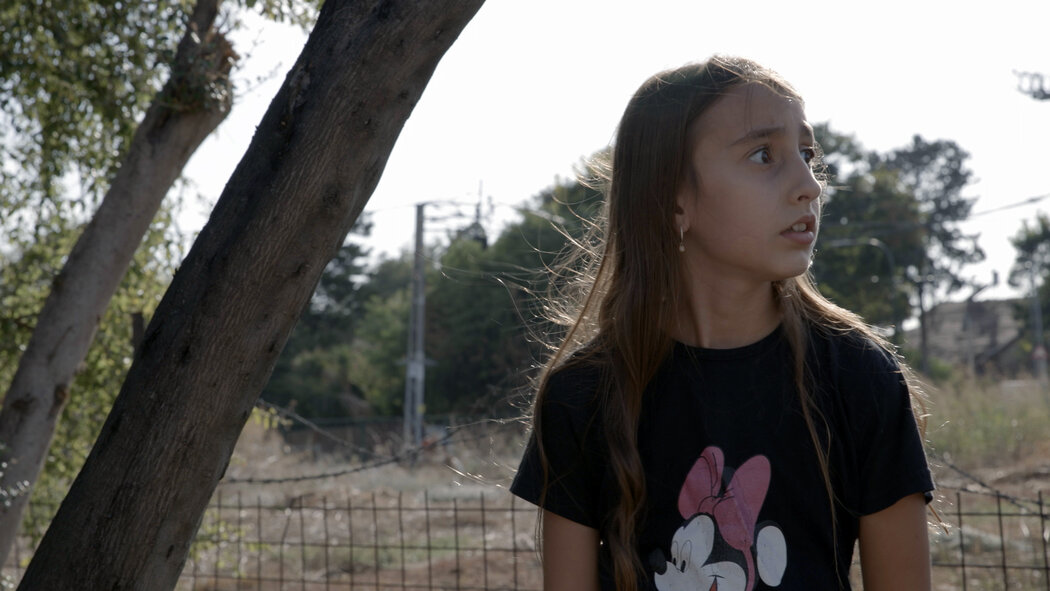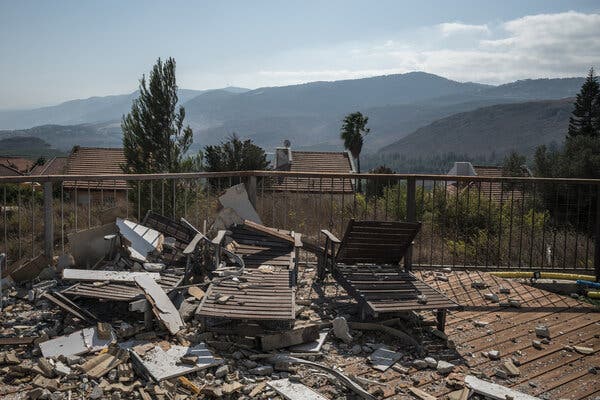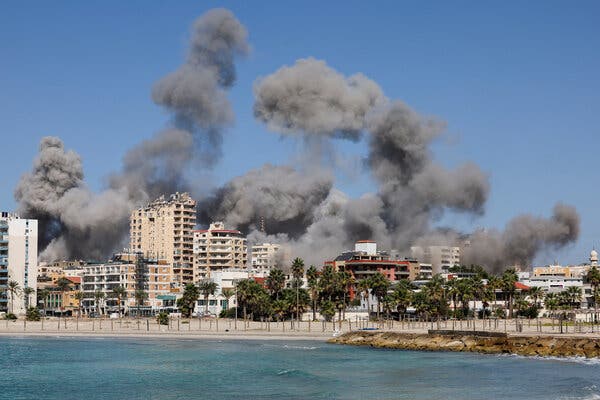transcript
‘We Are Still Afraid’: Life Inside Northern Israel
Homes in northern Israel along the Lebanon border have been under the constant threat of Hezbollah’s rocket attacks since October of last year. We look at life on the ground for the few Israelis who stayed behind.
“Come inside and close the door.” Just one mile from the Lebanon border, Hezbollah rocket and missile attacks have ramped up since Oct. 8 of last year. “Hopefully, there is no bombing. This is one, two, three.” Dozens of rockets have been fired toward northern Israel almost daily since then, in what Hezbollah has said is in solidarity with Hamas in Gaza. And while many are intercepted by Israel’s Iron Dome, it has fundamentally altered daily life here. We caught glimpses of the increasing militarization, after Israel recently began their ground invasion in Lebanon. “The border with Lebanon is right over there, and the clashes just behind this ridge. We see what the army do. We trust the army, know that the army do everything they need to keep the Hezbollah away, and for us to be safe. And you can see during which, as we speak. So we might have to move quickly, in case of another blast.” Ishai Efroni is one of the few people still in northern Israel, staying behind after tens of thousands were evacuated due to Hezbollah’s incoming rocket attacks. “That’s the swimming pool, the center of the kibbutz. It’s been abandoned.” As head of security at the Matzuva kibbutz, Ishai lives here with his family, and among those serving in the army, who we agreed not to film. “That’s the school, the kibbutz school that [was] abandoned. That’s where my daughter live, and it was hit by a rocket here nearly five days ago.” According to the Israeli government, 30 civilians have been killed by Hezbollah rocket attacks in northern Israel over the last year, and upwards of 64,000 people have been displaced, something that the Israeli prime minister has cited as his rationale for going after Hezbollah in Lebanon. “And Israel has every right to remove this threat and return our citizens to their homes safely.” Israel’s military campaign has killed more than 2,400 people in Lebanon since last October, according to the country’s health ministry. And more than 1.2 million have been displaced. “So we are in the Moshav Betzet, in the Western Galilee, next to the border with Lebanon.” Despite orders to evacuate within an active combat zone, some Israelis have decided to return home anyway. “In June, we got hit by a missile from Hezbollah. It was 107-millimeter rocket.” Idan Ishach-Erez and her children moved back after spending nine months displaced. “Sometimes, you actually can hear the missiles going over your head.” “When it’s one of [Hezbollah’s], there’s an alert that goes off on the phone. I feel uneasy. Then I wait in place, a little bit longer, and then I go out.” “There’s an alarm. It’s in Rosh Hanikra. Let’s go. It’s in Rosh Hanikra at the moment. It can also get closer.” In the middle of our conversation, another rocket alarm sends Idan and her daughter running for cover. “It’s a little bit further off. It’s not right here.” This time, they’re safe. But those still living here say they continue to live in fear as the fighting continues with no cease-fire in sight.

The Israeli village of Shtula sits just south of the Lebanon border, so close that the outgoing thud of artillery permeating the town’s emptiness comes from the Iranian-backed militia Hezbollah, not the Israeli Defense Forces. I.D.F. tanks and armored vehicles can be seen moving into place on the Israeli side of the border as the military expands its ground operations in Lebanon.
Increasing militarization across the northern border, along with ongoing rocket and missile attacks by Hezbollah, have continued to keep the towns and villages across the northern border nearly vacant, patrolled only by I.D.F. troops and regional civilian security in what the I.D.F. has declared “military zones.”
For the few residents who have decided to stay or return to nearby villages, daily life is now punctuated by the wailing alarm of incoming rockets, the blasts of Iron Dome interceptions, or the deep explosions of a rocket or missile slamming into the ground.
Idan Isach-Erez, 42, who evacuated her home in nearby Moshav Betzet in northern Israel after Hezbollah began firing rockets into northern Israel on Oct. 8 of last year, a day after the Hamas-led attack on southern Israel, has now come back after nine months.
“Although it’s not a good environment for my children, although we’re still afraid, you need to decide what is more important,” said Isach-Erez, about returning to her husband in order to keep her family and their business together. Her 8-year-old daughter now spends the evenings scavenging the yard for shards of shrapnel, always staying within running distance of their aboveground bomb shelter next to their home.
Ishai Efroni, a member of kibbutz Matzuva, and director of Security and Emergency Services for the Mateh Asher Regional Council, is in charge of securing 32 communities across northern Israel. He spends his days responding to rocket strikes and potential security threats across his communities. The kibbutz where he lives and works with his family originally had 1,300 members — now there’s roughly 50, with everyone working either as security or as reservists with the I.D.F., or as essential workers keeping tabs on Matzuva’s now scattered families.



